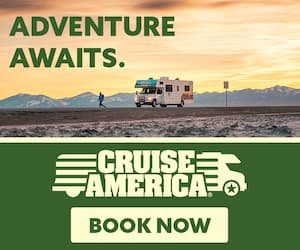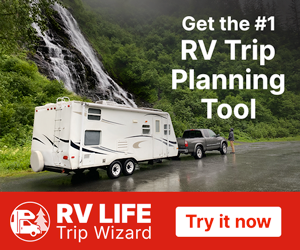Thinking about buying your first RV? You’re not alone—and you’re definitely not the first to feel overwhelmed.
At The RV Info Guide, we’ve heard every story in the book: first-time buyers spending far more than planned, choosing the wrong floor plan, or discovering hidden ownership costs after signing the papers.
Buying an RV is exciting—it’s the ticket to adventure, flexibility, and independence—but it’s also one of the biggest recreational purchases you’ll ever make. The difference between a dream purchase and a regret often comes down to a few avoidable mistakes.
In this guide, we’ll cover the Most common mistakes first-time RV buyers make and how to avoid them.
Each section includes actionable tips, links to useful tools, and insights from real RVers so you can shop with confidence and hit the road stress-free.
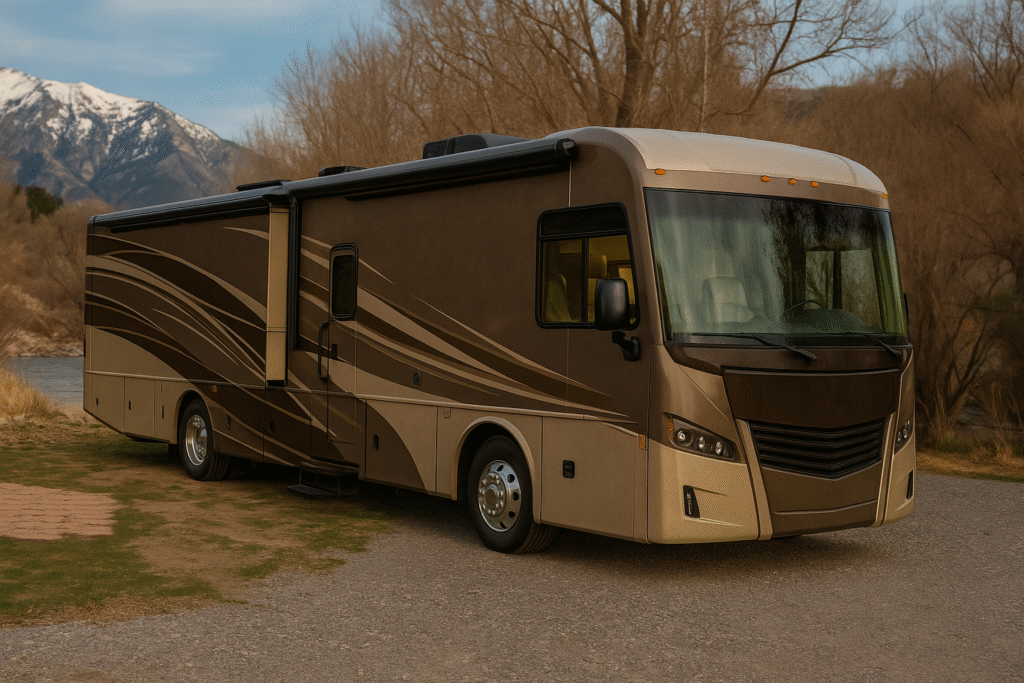
One of the Biggest Most Common Mistakes First-Time RV Buyers Make is buying too big.
Big rigs look impressive but can be overkill—and over budget.
Why This Happens
- Dealer lots are filled with huge, luxury models designed to wow you. It’s easy to get emotionally attached to gleaming countertops and slide-outs instead of thinking about what fits your lifestyle.
- Many buyers picture long cross-country trips, but in reality they only camp a few weekends a year.
- Salespeople often steer buyers toward higher-priced units because commission structures reward bigger sales.
What First-Time RV Buyers Should Know Before Choosing the Right Size
Oversized RVs can limit where you camp, cost twice as much to fuel, and require expensive storage.
Some national parks cap RV length at 35 feet, meaning that dream rig might never see your favorite park.
How to Avoid It
- Assess your travel pattern. Will you be weekend camping, snowbirding, or living full-time?
- Match size to experience. A smaller trailer or Class C is easier to maneuver and cheaper to maintain.
- Consider accessibility. Larger Class A motorhomes often struggle on narrow park roads or older campgrounds.
- Rent before you buy. Try a few different RV Rentals through Cruise America, Outdoorsy or RVshare to discover what truly fits your comfort level before committing to a $100 K+ purchase.
Buying the right size RV means less stress, lower costs, and more freedom to explore.
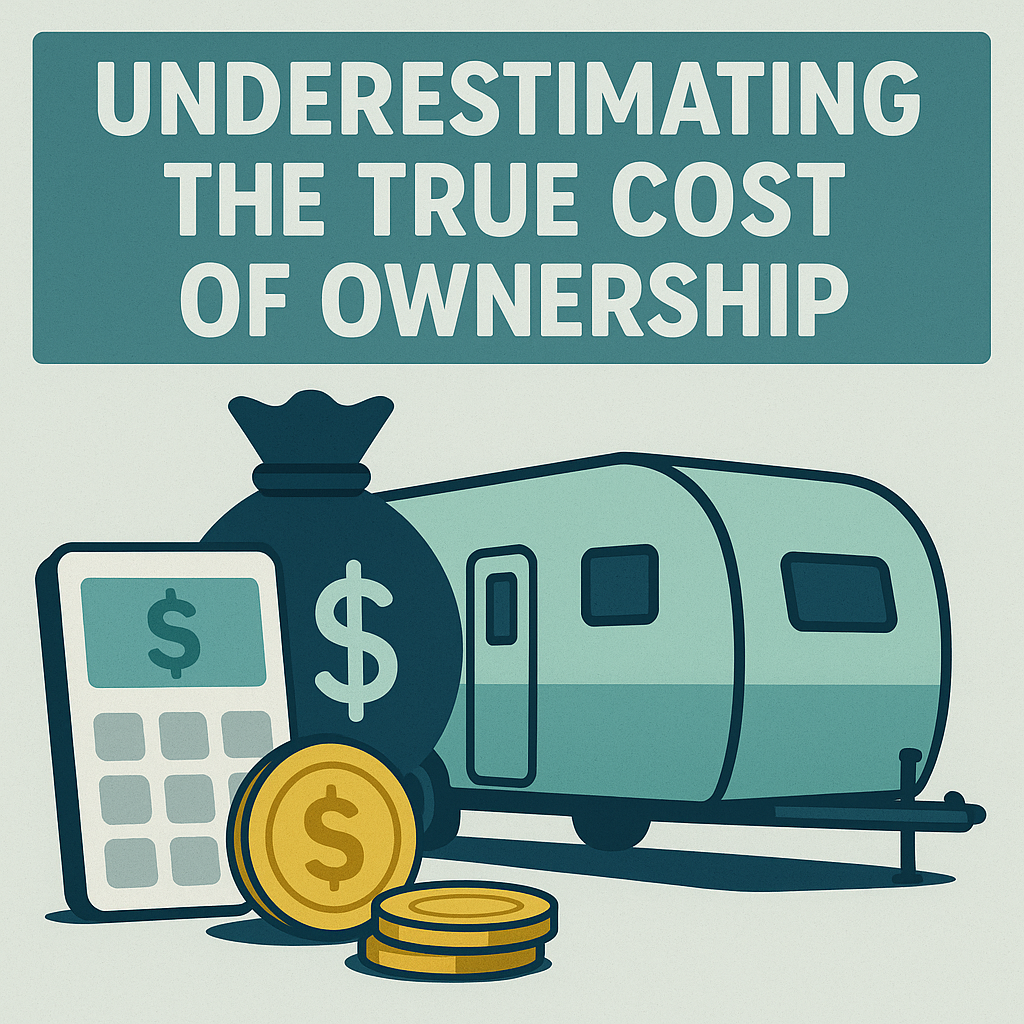
Underestimating the True Cost of Ownership
The purchase price of your RV is only the beginning.
Many first-time buyers focus entirely on the sticker price, only to realize later that the real costs of RV ownership include insurance, maintenance, storage, and travel expenses. These add up fast—and can turn that affordable dream rig into a monthly financial strain if you’re not prepared.
What Surprises Most New Owners
- Insurance premiums range from $75–$300 per month, depending on your rig’s class, value, and how often you travel.
- Storage fees can climb to $500 per month in urban areas—especially if HOA rules prevent parking at home.
- Maintenance and repairs often run 1–2% of your RV’s value each year. For a $75,000 motorhome, that’s $750–$1,500 annually.
- Fuel costs can be significant: Class A motorhomes average 6–10 MPG, while towing a trailer cuts your tow vehicle’s fuel efficiency by 30–40%.
- Campground stays vary widely—basic sites may cost $25 per night, while full-hookup RV resorts can exceed $100+.
Even small things—like propane refills, cleaning products, or registration fees—add to the yearly total.
Hidden Costs First-Timers Often Miss
- Tires: Many RV tires age out before they wear out. Replacing all six on a Class A can run $2,000+.
- Depreciation: RVs lose 20–30% of their value within the first three years.
- Upgrades: Solar panels, backup cameras, and satellite internet are fun but pricey add-ons.
- Accessories: Sewer hoses, surge protectors, and leveling blocks are essential but usually not included in the sale.
How to Avoid It
- Build a realistic RV budget. Use our Free RV Budget Calculator to factor in insurance, storage, fuel, and maintenance.
- Compare insurance quotes using services like Roamly or Good Sam Insurance—both cater specifically to RV owners.
- Create a maintenance fund. Set aside at least $100–$150 per month for unexpected issues such as roof leaks or appliance repairs.
- Plan for seasonal expenses. Winterizing kits, dehumidifiers, and antifreeze are small but necessary annual costs.
- Buy smart, not impulsively. Remember: a smaller, reliable RV that you can afford to use year-round is better than a luxury rig that sits in storage.
Owning an RV can absolutely fit your budget—it just takes honest planning and awareness before you sign the dotted line.
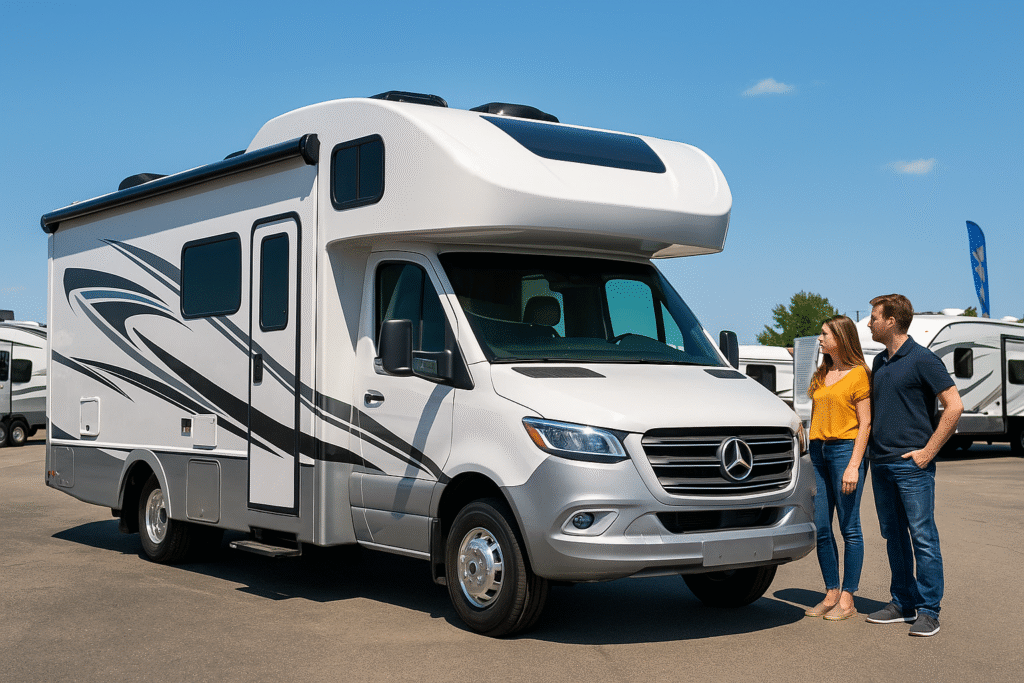
Skipping the Test Drive or Tow Test
You wouldn’t buy a car without driving it—so why would you buy an RV without taking it for a test drive?
One of the biggest mistakes new buyers make is assuming all RVs drive or tow the same. Comfort, visibility, braking distance, and even noise levels vary dramatically between models. The only way to know what fits you is to get behind the wheel.
Why It Matters
- Handling and braking: Larger rigs feel completely different from passenger vehicles. The stopping distance on a 20,000-pound Class A motorhome is much longer than your daily driver.
- Comfort and ergonomics: Seats, steering position, and mirror setup make a big difference on long drives. What feels fine in a parking lot can become miserable after 200 miles.
- Visibility and blind spots: Every RV has unique sightlines. Poor mirror placement or window angles can make lane changes stressful.
- Tow stability: For trailers and fifth-wheels, towing dynamics change based on weight distribution, hitch setup, and your truck’s suspension. You can’t tell if it feels safe until you actually tow it.
What Happens When You Skip It
Many new owners discover after purchase that their rig feels intimidating to drive—or that their truck struggles to pull a fully loaded trailer up steep grades. Some find out too late that their mirrors don’t extend far enough, or that wind buffeting causes white-knuckle driving. These issues can ruin early trips and cause expensive trade-ins later.
How to Avoid It
- Insist on a real test drive. Don’t settle for a dealership “walk-around.” Drive on the highway, in traffic, and through turns.
- Bring your tow vehicle. If you’re buying a trailer, hitch it up to your truck—not the dealer’s. Make sure it accelerates, brakes, and turns safely.
- Check seat comfort and mirror visibility. Sit in the driver’s seat for at least 10 minutes; test mirror adjustments and sightlines.
- Practice before your first trip. Spend a few hours in an empty parking lot learning how your RV responds before heading onto the interstate.

Rushing the Inspection Process
Whether new or used, every RV needs a thorough inspection before purchase. Many first-time buyers assume that a brand-new RV comes off the factory floor in perfect shape—but even new models can have leaks, misaligned slides, and wiring issues. Dealerships often move inventory fast, skipping small quality checks to keep up with demand.
Why It Happens
- Excitement overrides caution. Buyers get emotionally attached and don’t want to risk “losing the deal.”
- Dealers push urgency. Phrases like “It’ll be gone by tomorrow” or “We have another buyer waiting” create pressure.
- Factory shortcuts. RVs are built quickly, and quality control varies—especially during high-demand seasons.
- Inexperience. Many new buyers simply don’t know what to look for and assume the dealer’s pre-delivery inspection is enough.
Common Problems That Get Missed
- Water damage: Unsealed roof seams or cracked caulking are the most frequent (and costly) issues.
- Plumbing leaks: Loose fittings under sinks or in the water heater compartment can go unnoticed until your first trip.
- Electrical faults: Poor grounding or weak connections can cause power surges or dead outlets.
- Slide-out malfunctions: Misaligned slides can tear seals or jam under pressure.
- Bent frames or soft flooring: Often caused by previous overloading or unnoticed water intrusion.
A quick once-over in a dealership lot can’t uncover these problems. A careful inspection can save you thousands later.
How to Avoid It
- Slow down. Don’t let anyone rush you through an inspection. Take at least 2–3 hours, even for brand-new units.
- Bring a checklist. Download our Free RV Inspection Checklist (PDF) to guide you through each step.
- Hire a professional. For used RVs, invest in a certified third-party inspector—preferably NRVIA-certified. They use moisture meters, voltage testers, and thermal cameras to find hidden issues.
- Inspect during daylight. Lighting hides flaws—look closely at corners, seals, and undercarriage areas.
- Test every system. Run the generator, turn on the furnace and A/C, test water pressure, and ensure every light and outlet works.
A few hundred dollars spent on a professional inspection could save you thousands in future repairs.
Remember—once you drive it off the lot, most problems become your responsibility, not the dealer’s.
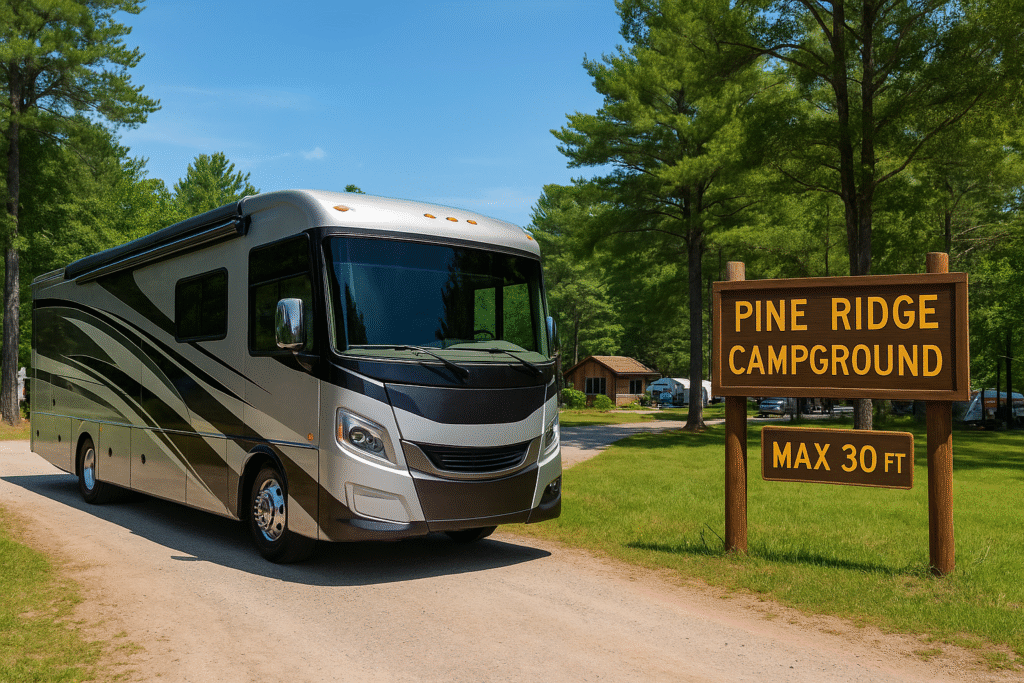
Not Researching Campground Accessibility
One of the most disappointing discoveries for new RV owners is realizing that their dream destinations can’t actually accommodate their rig. Campground size restrictions, low clearances, and limited hookups catch many first-timers off guard. Nothing ruins the excitement of a new RV faster than being turned away because you’re too long, too tall.
Why It Happens
- Overlooking park limitations. Many state and national parks were built decades ago, when smaller RVs were the norm.
- Assuming all sites have hookups. Not every campground offers full water, sewer, or 50-amp electrical connections.
- Ignoring access routes. Steep grades, sharp turns, or low bridges can make getting to a campground as challenging as staying there.
- Booking blindly online. Campground photos rarely show site angles, tree coverage, or tight turns—details that make or break large rigs.
Common Issues
- Length limits: Most national and state parks cap RV length between 27–35 feet. Sites are very limited for longer rigs.
- Height restrictions: Bridges and tunnels (especially on back roads and in older parks) may only allow vehicles under 12–13 feet.
- Hookup availability: Some campgrounds only offer dry camping—no water, sewer, or power.
- Limited turnaround space: Larger Class A motorhomes and long 5th wheel trailers can’t maneuver on some narrow park roads or tight loops.
How to Avoid It
- Research before you reserve. Always check the campground’s official website for length and height limits.
- Use reliable RV apps. Tools like Campendium, The Dyrt, and AllStays include user reviews, site photos, and real-world measurements from other RVers.
- Call ahead. If you’re close to the limits, call the park directly. Ask about site sizes, slope, and road conditions.
- Plan your route. Use RV-friendly GPS apps such as RV LIFE Trip Wizard or Roadtrippers to avoid low bridges and tight roads.
- Keep a backup plan. Always have an alternate campground or boondocking spot nearby in case a site doesn’t fit.
Whether you’re a seasoned RV traveler or new to the lifestyle, the RV LIFE GPS is an essential tool for navigating with ease and peace of mind. With its customized turn-by-turn directions (specific to your RV’s height, weight, and length), you can journey with confidence.
Knowing your rig’s exact length, width, and height (including A/C units or roof racks) is essential. Write those measurements on a card and keep it near the driver’s seat—you’ll reference it more often than you think.
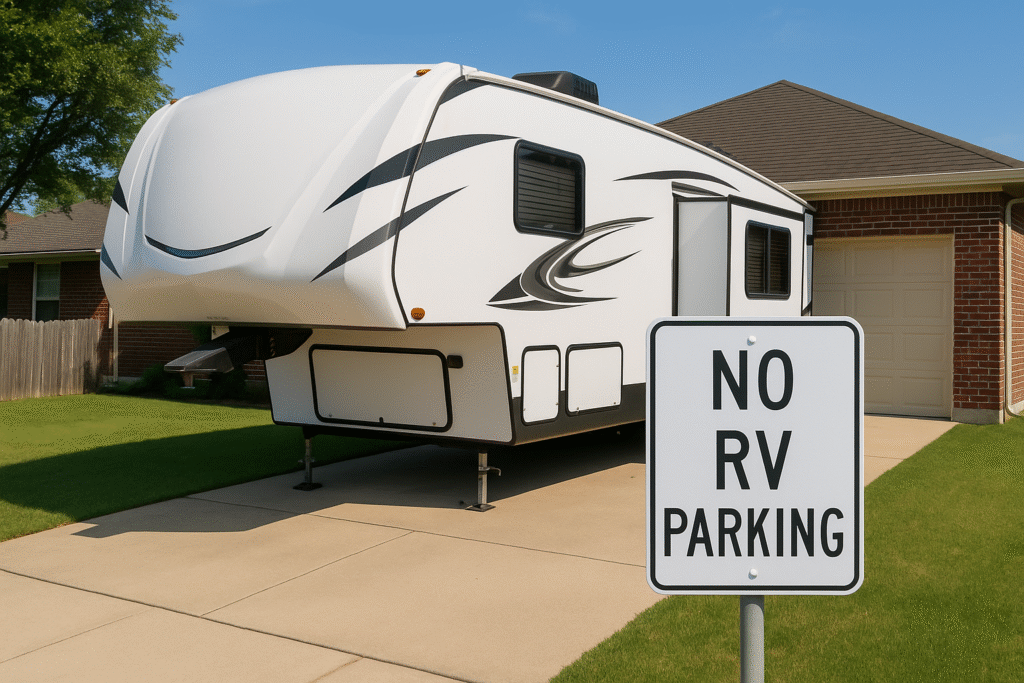
Overlooking Storage Solutions
Your RV might take you anywhere—but where will it live when you’re not traveling?
Many first-time owners forget to plan for storage until after the purchase, only to discover that their HOA forbids driveway parking or that their RV won’t fit under the carport. Long-term storage can be a major recurring cost, and improper storage can shorten your RV’s lifespan dramatically.
Why It Happens
- Excitement to buy outweighs logistics. The focus is all on floor plans and features—not where the rig will sit when not in use.
- Underestimating space. A 35-foot fifth wheel takes up more than two parking spots and needs wide clearance for turning.
- Ignoring HOA or city rules. Many residential communities restrict RV parking for aesthetic or safety reasons.
- Weather exposure. Sun, rain, and snow degrade seals, paint, and tires faster than most owners expect.
Why It Matters
An RV that sits exposed in your driveway or yard faces UV damage, water leaks, oxidation, and even pest infestations.
Leaving it uncovered can reduce resale value by thousands of dollars over time.
How to Avoid It
- Check local regulations. Before buying, confirm whether your city or HOA allows RV parking at home.
- Find a storage solution early. Use websites like Neighbor.com or SpareFoot to locate nearby indoor or covered RV storage options.
- Budget accordingly. Expect to pay $100–$500 per month, depending on size and location.
- Invest in protection. If you must store outdoors, use a high-quality RV cover or tarp designed for your rig type. This protects seals and paint from UV rays and moisture.
- Winterize before storage. Drain water lines, disconnect batteries, and cover vents to prevent freezing or pests during long idle periods.
Planning for storage isn’t the exciting part of RV ownership—but it’s one of the smartest moves you can make to protect your investment.
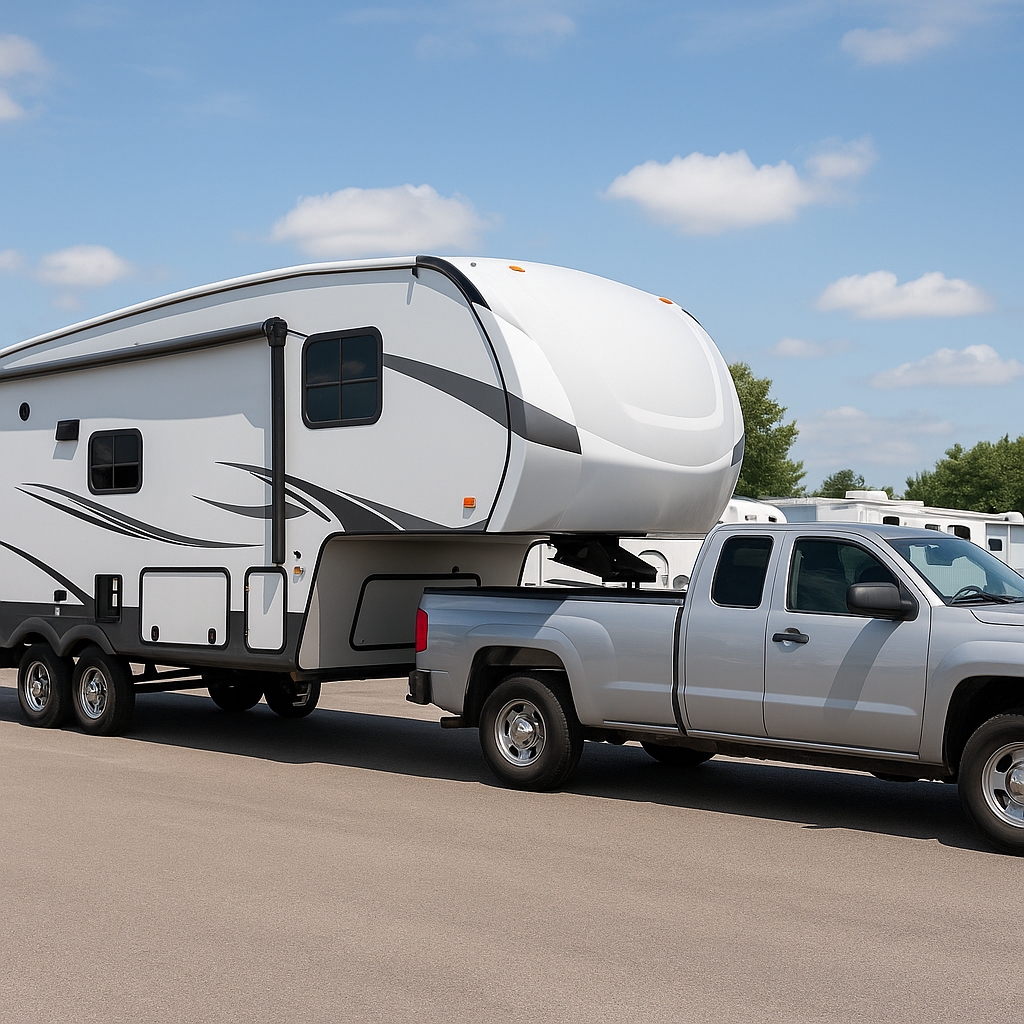
Buying Without Considering Your Tow Vehicle
If you’re buying a towable RV—like a travel trailer or fifth wheel—your tow vehicle is just as important as the RV itself. Many first-time buyers fall in love with a trailer on the lot, only to realize later that their current truck can’t safely tow it. This mistake can be both dangerous and expensive.
Why It Happens
- Dealership focus: Salespeople sell RVs, not trucks. They often assume your vehicle can handle the weight.
- Overconfidence: Buyers underestimate the importance of towing ratios and payload capacity.
- Hidden numbers: Brochures and online specs rarely show the true loaded weight once water, propane, and cargo are added.
- Mismatched upgrades: Adding aftermarket accessories or passengers can throw off towing balance and safety.
The Problem in Real Life
Trying to tow too much weight can overheat your transmission, blow tires, or even cause accidents.
A trailer that sways, fishtails, or pushes your truck downhill can make driving stressful and dangerous. Insurance may even deny claims if you exceed your vehicle’s limits.
How to Avoid It
- Know your ratings. Before buying, check your vehicle’s GVWR (Gross Vehicle Weight Rating), GCWR (Gross Combined Weight Rating), and payload capacity. You can find these on the driver-side door sticker or in the owner’s manual.
- Match trailer to truck. A safe rule of thumb: your loaded trailer should not exceed 80% of your vehicle’s maximum tow rating.
- Use a Tow Compatibility Guide. Our guide helps calculate safe towing limits and match popular RV models to the right trucks.
- Upgrade smart. If you need a new tow vehicle, choose one with a towing package, integrated brake controller, and heavy-duty transmission cooler.
- Invest in the right equipment.
- A weight-distribution hitch with sway control improves handling.
- Tow mirrors expand visibility.
- Brake controllers reduce wear and improve safety during stops.
- Load carefully. Balance cargo evenly and secure everything inside the trailer to prevent sway.
Taking the time to pair your tow vehicle and RV correctly ensures safer travel, smoother handling, and a far more enjoyable driving experience.
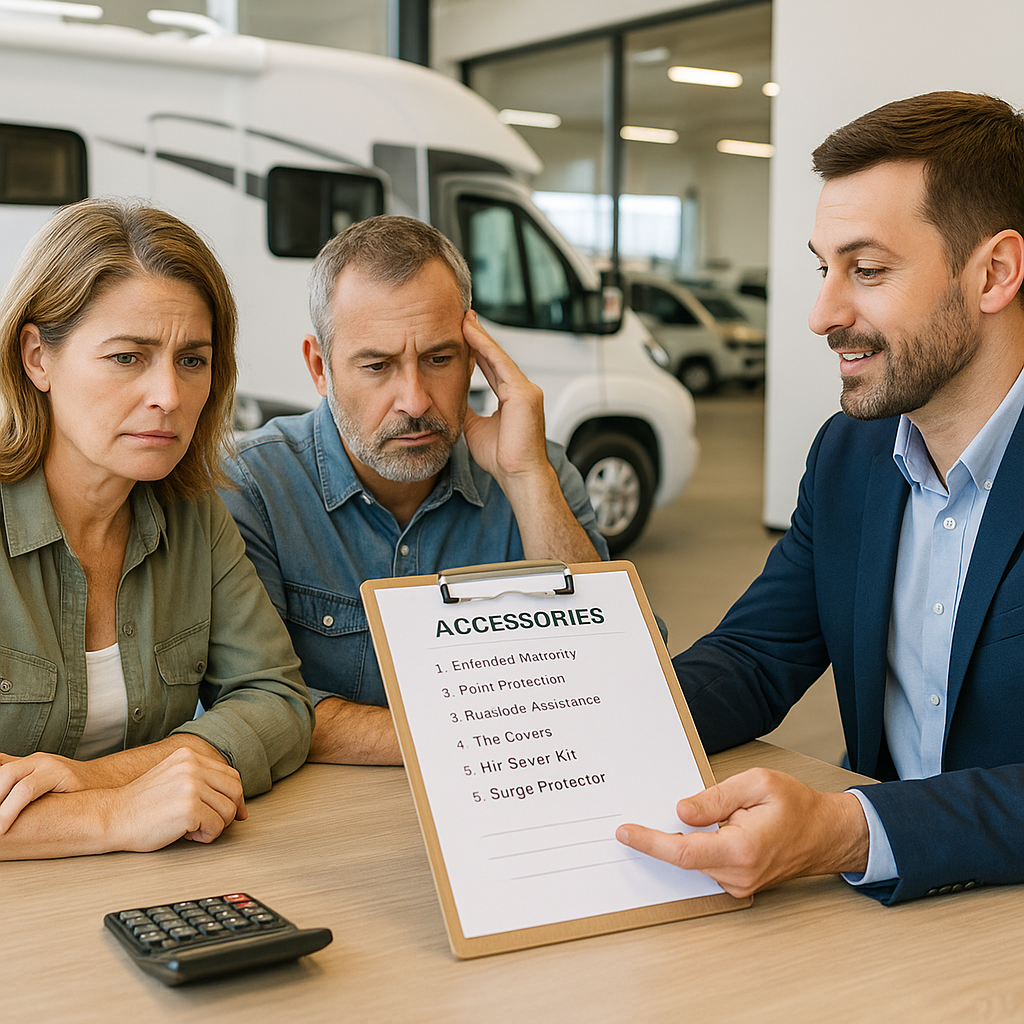
Falling for Unnecessary Dealer Add-Ons
When you’re excited to buy your first RV, it’s easy to say yes to every accessory a dealership recommends.
Sales reps often present add-ons as “must-haves,” but many of these products are overpriced—or things you could buy online for half the cost and better quality.
Why It Happens
- Upselling is built into the process. Dealerships make much of their profit from extras like warranties, coatings, and packages.
- Buyers want convenience. It feels easier to roll everything into one payment rather than shop separately.
- New owners don’t yet know what they actually need. Without experience, it’s hard to distinguish between essentials and gimmicks.
- High-pressure tactics. Phrases like “It’s only a few more dollars a month” sound harmless but add up fast.
Common Add-Ons That Waste Money
- Extended warranties with hidden exclusions that rarely cover major repairs.
- Paint or fabric protection coatings that cost hundreds but can be done yourself with a $30 product.
- “Starter kits” containing low-quality hoses, adapters, or regulators.
- Overpriced GPS units or tire pressure systems that you can find online with better reviews and warranty support.
Smart Alternatives
- Buy proven gear online. Look for highly rated essentials like:
- Drinking-water hoses (lead-free, kink-resistant)
- Sewer kits with clear elbows and heavy-duty fittings
- Surge protectors or EMS systems to protect from campground power surges
- TPMS (Tire Pressure Monitoring Systems) for real-time safety alerts
- Shop around. Use Amazon or trusted RV retailers to compare prices and reviews before committing.
- Skip the “bundled” kits. Build your own checklist—our RV Gear Essentials Guide outlines the top products worth buying once, not twice.
- Read the fine print. If a dealer warranty sounds good, request the full coverage document—not the brochure summary.must-have RV gear before stepping into the dealership.
How to Avoid It
- Go into the dealership with a written list of what you actually need.
- Politely decline anything not on your list and revisit later if you still want it.
- Remind yourself: you can always buy accessories after you’ve taken a few trips and know what really matters.
The goal isn’t to skip protection or comfort—it’s to avoid overpaying for things you could easily buy smarter elsewhere.
Spend your money on gear that improves your travel experience, not your dealer’s commission check.

Ignoring Floor Plan Livability
It’s easy to get distracted by shiny features—fireplaces, big-screen TVs, or luxury countertops—but the floor plan is what truly determines whether you’ll love or hate your RV after a few trips.
Many first-time buyers choose based on looks instead of livability, only to realize too late that daily routines—like cooking, showering, or even turning around—are awkward or uncomfortable.
Why It Happens
- Dealership lighting and staging are deceptive. RVs look more spacious under bright lights with slides fully extended.
- Buyers don’t “test” the space. They forget to close slides, sit in chairs, or move through the layout as they would in real life.
- Aesthetics take priority. Granite counters and leather sofas can overshadow functional details like bathroom access or pantry storage.
- Unfamiliarity with camping styles. Weekend campers and full-timers need different setups—what’s perfect for one might frustrate the other.
Common Layout Mistakes
- Inaccessible bathrooms when slides are closed, forcing awkward roadside breaks.
- Beds jammed against walls, making it hard to climb in or change sheets.
- Tight kitchens with no counter space or places to set a coffee maker.
- Poor seating angles where the TV or windows aren’t visible from the main chairs.
- Wasted storage in beautiful but impractical cabinetry.
How to Avoid It
- “Live” in the floor plan before buying. Sit at the dinette, stretch out on the bed, and pretend you’re cooking breakfast or walking through on a rainy day.
- Close the slides and walk through again—can you still access the bathroom, fridge, or bedroom? If not, it might not work for road trips.
- Measure storage and sleeping areas. Bring a tape measure and confirm the bed length, closet space, and under-bed storage.
- Watch owner walk-through videos. YouTube reviews often reveal hidden design flaws or clever space solutions.
- Test drive the lifestyle. Rent the same floor plan through Outdoorsy or RVshare before you commit—one weekend can tell you more than any brochure.
A beautiful RV means nothing if it’s uncomfortable to live in.
When in doubt, prioritize flow over flair—a smart layout will make every trip smoother and more enjoyable.
Not Joining the RV Community Before Buying — A Costly First-Time RV Buyer Mistake
One of the best ways to become a confident RV buyer is to learn directly from people who already own one.
Yet many first-timers skip this step, relying solely on salespeople or YouTube videos.
The truth is, real-world RVers are your best resource—they’ve already made the mistakes, solved the problems, and discovered what truly works on the road.
Why It Happens
- Information overload. With thousands of RV models and opinions online, new buyers don’t know where to start.
- Sales pressure. Dealers want to close the sale now, not wait for you to research and compare experiences.
- Shyness or inexperience. Some people feel uncomfortable asking strangers for advice or posting questions online.
Why It Matters
The RV community is one of the most welcoming groups you’ll ever meet.
By connecting early, you’ll get honest feedback on brands, floor plans, and common issues—insight you’ll never hear in a showroom.
A five-minute chat with an experienced RVer can save you thousands of dollars or months of frustration.
How to Connect
- Join online forums like iRV2, RVillage, and the RV subreddit. These communities cover everything from RV maintenance to campground reviews.
- Attend local RV shows and meetups. Walk through rigs, attend workshops, and chat with owners about their experiences.
- Follow RV YouTubers or Facebook groups. Look for creators who share unbiased walkthroughs, maintenance tutorials, and honest pros/cons of specific models. Check out Josh the RV Nerd.
- Talk to campers in person. Visit a local RV park or campground and ask owners what they love about their setup—and what they’d change if they could.
- Network before you buy. Many full-timers and part-timers are happy to share recommendations for inspectors, insurance providers, and repair shops.
Joining the RV community early helps you skip years of trial and error. You’ll make smarter buying choices and gain a support system for every stage of ownership—from choosing your first rig to planning your first cross-country trip.

Conclusion
Most common mistakes First-Time RV buyers make are part of any new adventure—but they don’t have to be yours.
By taking time to research, test-drive, and connect with experienced RVers, you’ll enter ownership with confidence instead of surprises.
Think of your first RV not as a spontaneous purchase, but as an investment in years of travel freedom.
Spend a little extra time planning, and you’ll save thousands in the long run—money you can put toward fuel, upgrades, or unforgettable destinations instead of costly repairs.
When you know what to avoid, you can focus on what really matters—the best RV for you that is enjoyable and stress free.


